Introduction to Status Summary (By Type) #
This section provides an overview of the progress of your work by status type (i.e., On Track, At Risk, Off Track, Completed, or Not Started). It has the following elements:
- User Statistics Filter. Select a particular user and see the statistics for their work.
- Status Type Count. This displays a count of your work items by status type (i.e., On Track, At Risk, Off Track, Completed, or Not Started).
- Status Type Graph. See the flow of your work for a particular status type. (You can Filter by Date and Filter by Status)
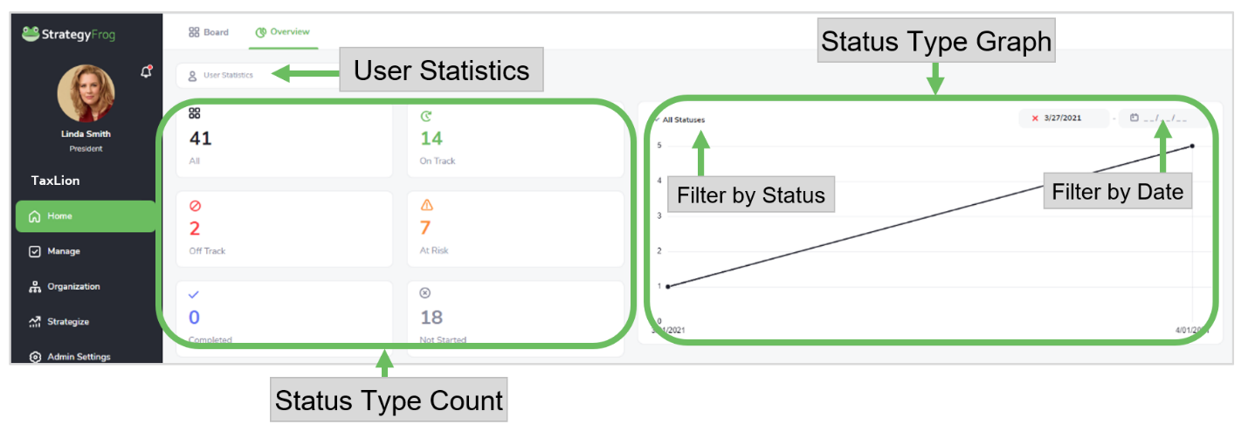
User Statistics ( ) #
) #
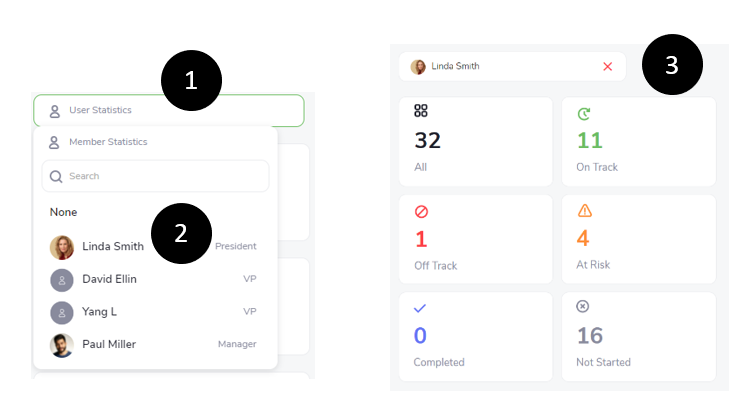
- Click
 to select or search for a user to review their work progress.
to select or search for a user to review their work progress. - Select a person by clicking on their name.
- Review this person’s progress in the StatusType Count or Status Type Graph
Status Type Count #
Review a person’s progress in the Status Type Count work area after selecting a user in User Statistics.
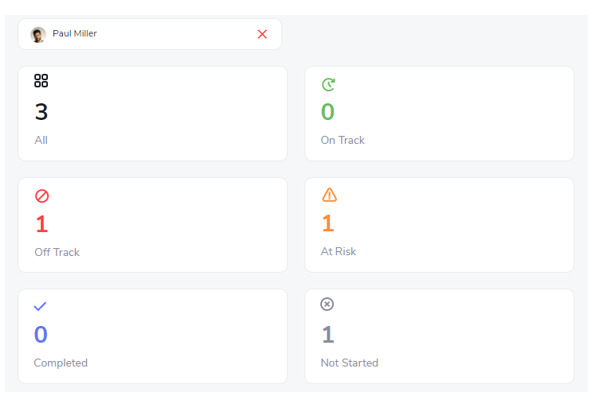
Note:
- By default, StrategyFrog presents the StatusType for the entire organization unless a user has been selected.
- This section displays the counted work items by Status. For example, Paul Miller has 3 items (All). He has one (1) item that is Off Track, one (1) item that is At Risk, and one (1) item that has Not Started yet.
Status Type Graph #
Review a person’s progress in the Status Type Count work area after selecting a user in User Statistics.
Filter by Status #
- Click to select the status type you want to display (i.e., On Track, At Risk, Off Track, Completed, or Not Started.)
- View the graph showing the progress of a status type over time.
Example:
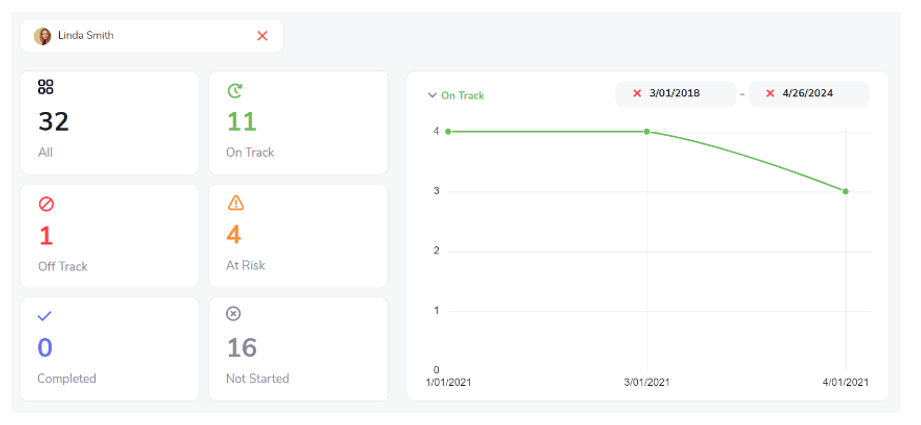
Linda Smith has a total of 32 work items, with 11 of these items being On Track. The Status Type Graph shows that Linda did the following:
- 1/01/2021 – Created 4 tasks that currently have On Track status
- 3/01/2021 – Created 4 tasks that currently have On Track status
- 4/01/2021 – Created 4 tasks that currently have On Track status
Note: Hover over the graph to identify specific item counts. See the example below.
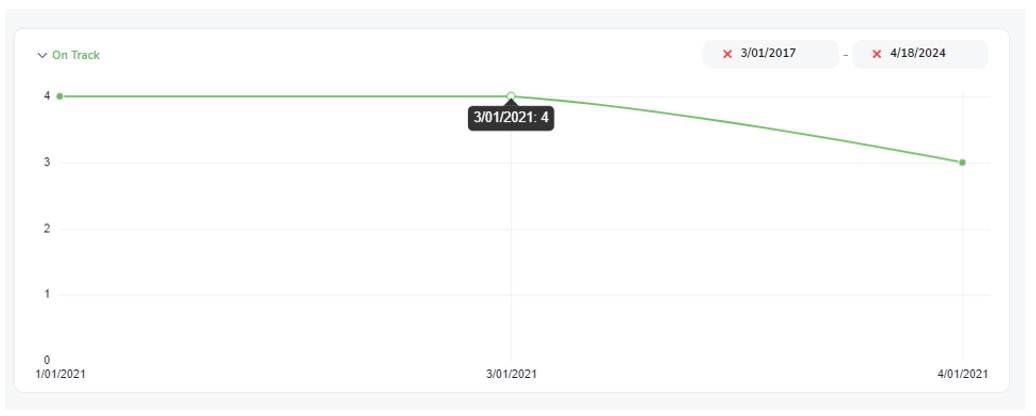
Date Filter (  ) #
) #
- Click the Start Date (
 ).
).
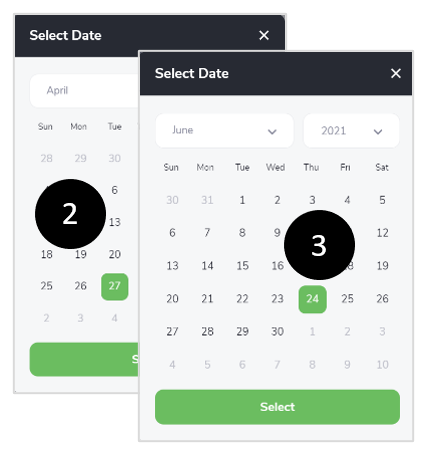
- Choose a Start Date.
- Click Select.
- Click the End Date(
 ).
). - Choose an End Date.
- Click Select.
- Note that the Date Filter shows a date range (
 ).
). - Click X to cancel the dates.



